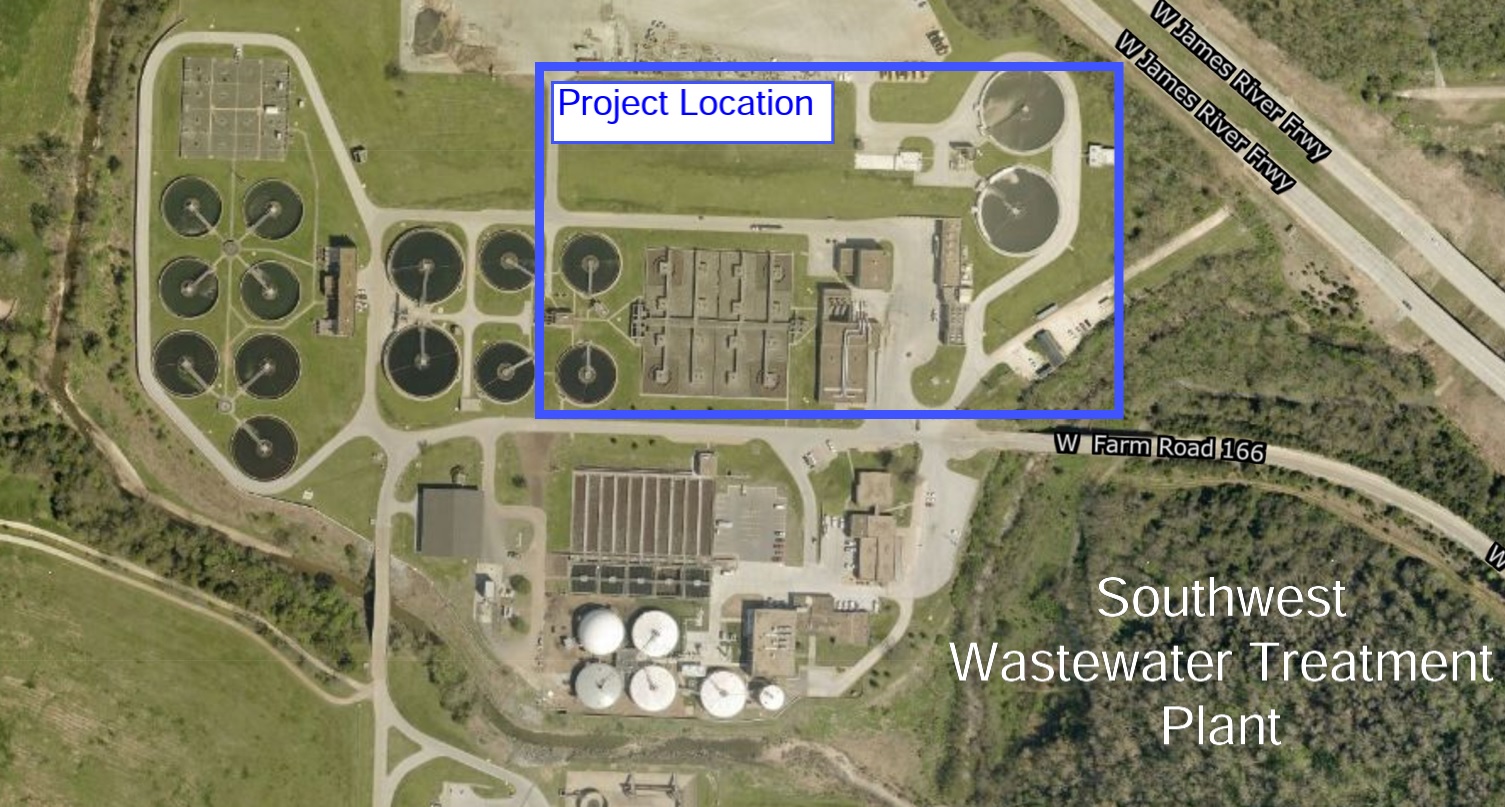After you flush, you probably don't think about what it just cost you, or where the stuff you just flushed is going, but both of those concerns will be on the minds of the Springfield City Council in the coming years.
From now until 2025, Springfield’s elected leaders will consider a series of sewer rate increases for about 80,000 customers. These would be in addition to water rate increases previously reported.
Errin Kemper, Springfield's director of environmental services, made a presentation to the Springfield City Council in early September that outlined a recommended set of rate increases over three years from 2023 to 2025.
“We’ve been here for 100 years, and as long as people are still using water and flushing toilets, we’re probably going to be here for another 100 years,” Kemper said. “It’s very important that we manage this system with the long view in mind, and that means making sure that we’re maintaining critical infrastructure, protecting water quality for our region and doing it in a way that keeps sewer rates affordable.”
How much more will you pay?
Springfield imposes two charges on sewer customers: a customer charge, or a monthly charge on every sewer connection, and a volume charge based on every 100 cubic feet of water a household or building consumes.
“Every single connection pays that base fee, and then they pay a straight volume charge based on their water use,” Kemper said.
Customers pay a base sewer rate of $23.34 per month plus $2.71 for every 100 cubic feet, or 748 gallons, of water they use. The staffers in the Department of Environmental Services recommend the base rate go to $24.04 on July 1, 2023, $24.76 in 2024, and $25.50 in 2025. At the same time, the recommended volume rate would go to $2.79 on July 1, 2023, $2.88 in 2024 and $2.96 per 100 cubic feet of water in 2025.
“We are proposing a system-wide increase of 3 percent for the retail rates for each of the next three years,” Kemper said. “In addition, we are proposing to increase the wholesale volume charge by 8 percent for each of the next three years.”
Additional surcharges may apply to certain industrial customers, and then customers in suburbs like Willard, Strafford and Battlefield pay additional wholesale charges. More than 20 percent of Springfield sewer customers live outside the city limits.
“While Springfield has seen some significant rate increases over the last decade, our projects show that the supplemental overflow control plan can be achieved through rate increases that generally match inflation,” Kemper said.
Springfield plans to spend about $300 million over the next 15 years to maintain and improve the sewer system.
Slight increases over time

Kemper told the City Council that seven years ago, Springfield needed to raise funding to invest in its aging sewer system.
“Back in 2015, we were working to avoid some pretty significant rate increases, we were looking at numbers like 17-percent annual rate increases at the time, but by focusing on solutions that get the most benefit for every dollar spent, we have been able to develop a plan that should keep rates low for the foreseeable future,” Kemper said.
In 2021, the Springfield Department of Environmental Services did a survey of sewer rates comparing Springfield to surrounding cities in Missouri and in the Midwest. The comparisons included Columbia, Independence, Blue Springs, St. Charles, St. Peters; Amarillo, Texas; Joliet, Illinois; Chattanooga, Tennessee; and Overland Park, Kansas, among others. In total, the report examines 15 Missouri cities and 17 cities of similar size to Springfield from other parts of the United States.
“The study showed that, on average, Springfield residents pay 18 percent less than residents in other cities in Missouri,” a key finding in the study reads. “The average Springfield residential sewer bill in 2021 was $37.63 per month, which is $8.33 per month less than the average.”
Councilman Richard Ollis expressed support for three years of increases in phases
“Nobody likes to have their utility costs increase, but when you look at the pipes that we have in the ground and how old they are, and the fact that many of them need to be replaced or repaired, I think this is a great way to go about it that is affordable for people in general,” Ollis said.
The last scheduled rate increase for Springfield sewer customers occurred in July 2022. The next proposed increase is to be debated in January 2023, with a plan that the increase would start with bills that go out on July 1, 2023.
“We want to make sure that you’ve got plenty of time to consider such an important issue,” Kemper said.
Councilman Matt Simpson wants to take a closer look at the rates out-of-town customers in the suburbs pay to use the Springfield system.
“I think we want to make sure we’re charging people a reasonable price, but it does seem to me like it’s good stewardship to ensure that residents are not subsidizing nonresidents, particularly when we see the number of water quality projects that are funded through property tax revenue in the city,” Simpson said.
Nationally recognized clean water

The federal 1972 Clean Water Act bans sanitary sewer overflows, or events where raw sewage is discharged downstream. The U.S. Environmental Protection Agency, or EPA, also stepped up enforcement of the Clean Water Act over the last 20 years, cracking down on large communities with track records of sewer overflows.
In a 2012 response to a request from the EPA, Springfield wrote its integrated plan for the environment with a plan to protect against raw sewage entering Wilson’s Creek or the Little Sac River.
“Water quality is one of the reasons that Springfield is a great place to live, and we all want to be part of that,” Kemper said. “Our community is facing increasingly stringent environmental regulations on every front.”
The Springfield sewer system boasts 1,200 miles of pipelines with more than 80,000 sewer connections. The Southwest Wastewater Treatment Plant treats about 35 million gallons of wastewater per day and discharges treated effluent into Wilson’s Creek. The Northwest Wastewater Treatment Plant treats an average of 9.5 million gallons of wastewater per day, and discharges into the Little Sac River.
“Our flows in the system can go from 30 million gallons a day beyond 100 million gallons a day,” Kemper said. “There’s a lot of energy that goes into managing that.”
Overflows occur during heavy rains, when rainwater is absorbed into the ground and infiltrates the sewer system, causing higher-than-usual volumes of fluid to pass through the system and into the sewage treatment plants.
Both of Springfield’s treatment plants have won awards from the National Association of Clean Water Agencies, netting national recognition.
“We’ve been highlighted in several reports to Congress that have kind of held Springfield up as a model community,” Kemper said.
Debate over burdens of base charges
General Councilman Craig Hosmer asked about running a fast food restaurant, and paying to have a sewer connection at that restaurant, where water and wastewater use are likely to be heavy.
“If I run a McDonald’s and have one connection, do I pay just the $23.34? That’s the same amount that a customer that has a single-family home pays?” Hosmer asked. “Have we ever looked at whether that’s fair?”
Kemper said the rate design hasn’t changed since sewer rate calculations last underwent a major examination.
Kemper and his team found Springfield’s commercial customers pay 41 percent less money than companies pay for sewer service in other Missouri cities, and Springfield industrial customers pay an average of 26 percent less than their counterparts in other cities.
“It seems like we’re skewing the burden of the sewer system on residential users rather than commercial or industrial users,” Hosmer said.
Mayor Ken McClure objected to Hosmer’s use of the word “skewed” to describe the percentages.
“Saying it’s skewed is not accurate,” McClure said. “You’ve got to be careful saying that.”
“Well, I believe it is accurate,” Hosmer said. “My point is, should we look at really what the volume — I mean, it seems like everybody would be better off using the actual volume of water.”
“What we’re attempting to do is distribute the cost of operating the system across all of the wastewater use in the system,” Kemper said. “The goal is to try to land somewhere in distributing those costs equitably, but certainly, you can change that in a lot of different ways.”
City Manager Jason Gage said Springfield uses the volume charge for every 100 cubic feet of water used per billing period to deal with commercial customers that use more water and generate more sewage than residential customers.
“The biggest difference between residential and commercial really comes in to the volume charge, and really, they’re set up as a lot of systems are — most of them probably across the country — to take advantage of the bulk of sewage that comes in and deal with it with a volume charge,” Gage said.
The September meeting on potential sewer rate increases was informational. Any sewer rate increases would have to be enacted through City Council bills and affirmative votes in months and years to come.

